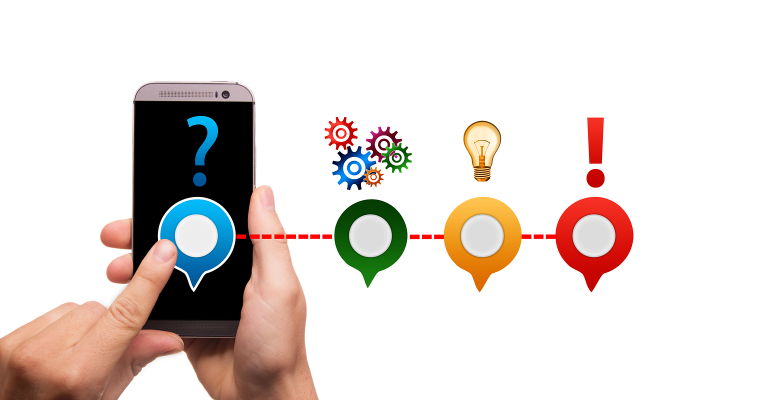Mobile learning practices helps instructors to provide flexibility and easy accessibility that learners crave. Apart from that, it also enables on-the-go training, which allows learners to learn at their convenience.
Anyone can implement mobile learning, and expect to get the best out of it. However, to achieve the best results, there’s a need to use different mobile learning practices to improve e-learning.
In this article, we’ll be looking at different mobile learning practices to improve e-learning and deliver a better learning experience for your learners.
7 mobile learning practices to improve eLearning
Utilize a clear structure and design for microlearning
Designing for microlearning is one of the mobile learning practices to improve e-learning. It helps instructors to deliver a better learning experience.
Creating a bite-sized module doesn’t necessarily require that you cut your course content into segments. Doing that can make learning go bad and confusing.
Imagine cutting lengthy courses into chunks, only to realize that the end product is missing out on some vital information. That could distract your learners from getting the learning objective of the module.
So, to achieve the best results, you need to utilize a clear structure and design for microlearning. One way to make that happen is by noting your main topic and subtopics.
You can then create Chuck modules for each subtopic, with each having different learning objectives.
Make your courses short
To deliver a better learning experience, ensure to make your courses shorter for mobile learners. That’s one of the most effective mobile learning practices to improve e-learning.
So, to avoid boring your learners with too much content, 5 minutes is ideal enough for each course. Anything more than that can discourage your learners from catching the goal of the training.
Integrate a range of media content into your mobile learning
Another mobile learning practice to improve e-learning is utilizing a range of media content for your training. These content could include e-learning videos, infographics, animation, textual content, immersive environment, and many more.
Incorporating them will enable you to provide an engaging and interactive learning experience. Apart from that, you also get to deliver an easily accessible online training that caters to all your learners’ needs.
Design courses to be mobile responsive
There are varieties of mobile devices with different screen sizes. As such, ensure that you create your courses to be responsive to all mobile devices, irrespective of their screen sizes.
That’ll help to enhance ease of use, and enable learners to access your courses from different devices.
Often, most contents that look visually pleasing and attractive on the PC are always less attractive on mobile devices. For that reason, you need to create your content for mobile devices.
User-friendly design is essential
One thing is to design your course to be mobile-friendly, another is to ensure that it’s user-friendly. To deliver a better learning experience, you must make your design intuitive and flexible.
That’ll prevent distraction from the interface and enhance smooth navigation.
Introduce gamification to your training
No doubt, gamification in online training brings fun and engages learners to acquire knowledge. Apart from that, it helps learners to retain knowledge easily and increases their chances of using the learning concept in real-life situations.
So, incorporating games into your mobile learning will assist your learners in mastering some specific skills, for end rewards. These rewards can also serve as motivation to other learners, seeing that their colleagues are winning rewards, and getting certified.
One way to include gamification in mobile learning is by introducing gaming elements and setting goals and rewards for each level of the game.
Make it such a way that learners can only move to the next level if they successfully achieve the learning objective of the previous level.
Tailored feedback
Another mobile learning practice to improve e-learning is giving tailored feedback to assist your learners. Like the traditional classroom, you should render immediate support and feedback to your learners, at each progression when they make an error.
You can also make it in such a way that you notify them of an alternative approach to solving problems. By so doing, your learners can get engaged and relate well with your course.
You shouldn’t ignore the best practices of learning design, just because you’re shifting to mobile learning. So, to deliver a better learning experience, make use of the above listed mobile learning practices to improve your e-learning.







